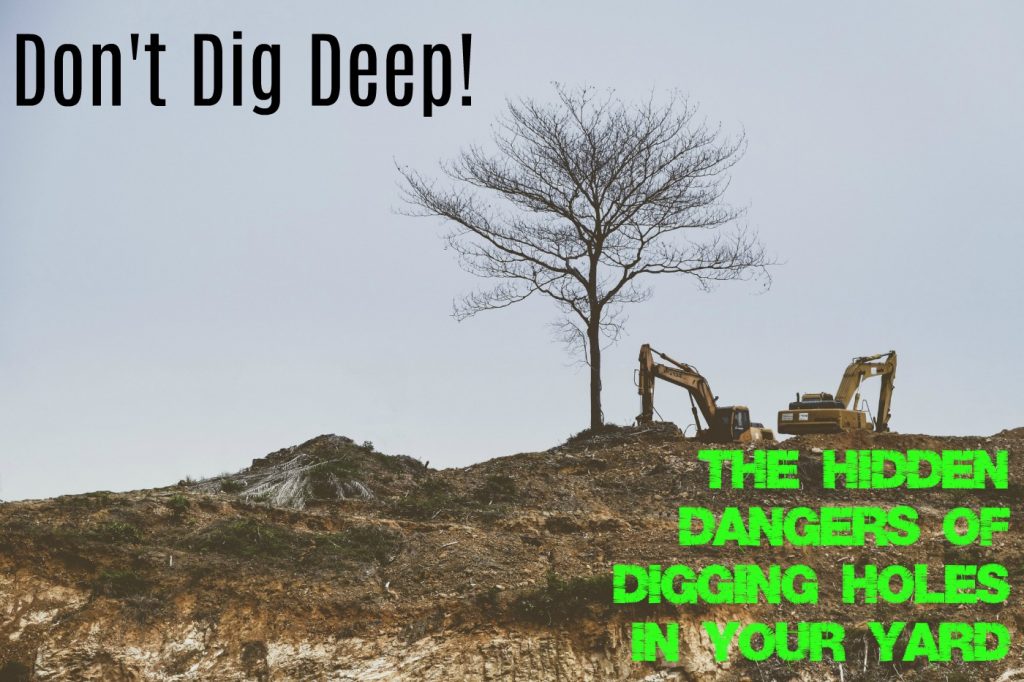Trenching is one of the most dangerous activities during home construction. Every year, construction workers are killed or seriously injured while working in trenches. Safety hazards to be aware of when trenching include cave-ins, falling objects, and exposure to hazardous materials. By following some simple safety precautions, however, you can help to reduce the risks associated with trenching.
Here are five tips to help keep you safe while trenching.
1 – Use the Right Equipment for Your Trenching Project
Equipment is a necessary part of any home construction. The right equipment makes the job easier and helps ensure that the finished product meets all the requirements. When choosing equipment for your home construction, it is important to select items that are durable and easy to use.
Construction sites can be dangerous places, and it is essential to have equipment that can withstand the rigors of the job. Additionally, construction equipment can be expensive, so choosing items that will last many years is vital. By selecting the right equipment, you can ensure that your home construction project will succeed.
For example, if you want to create a small trench for water pipes, there’s no point in getting a massive excavator. Instead, a small bobcat excavator would do just fine. You can use this small excavator within a budget for several tasks like trenching, landscaping, soil excavation, etc. Moreover, these small excavators are usually safer than heavy machines to work with, ensuring optimal safety for your construction project.
2 – Inspect the Area Before You Dig
As a home construction expert, I always recommend that my clients inspect the area before starting any work. This is especially important if you’re building on a slope or near a body of water. You can avoid problems down the road by taking the time to assess the risks.
For example, if you’re building on a slope, you’ll need to be extra careful to prevent soil erosion. And if you’re close to a river or lake, you’ll want to ensure that your foundation is strong enough to resist water flow. Being proactive and inspecting the area before you start construction can save you a lot of hassle and expense in the long run.
SPECIAL EDITORIAL NOTE: Residents of the United States and its territories must call 811 before you dig. An inspector will visit the job site and advise you of the presence of any public utilities. You are responsible for damages if you fail to call for this inspection and damage any public utility infrastructure. Civil and criminal negligence laws exist in most states, putting you at significant risk if you skip this requirement. I’m neither an attorney nor dispensing legal advice–just a blogger sharing common knowledge. Seek an attorney’s advice if you need specific guidance.
3 – Know the Soil Type
The soil on your property will significantly impact your home’s foundation. That’s why it’s important to understand soil types before starting construction. There are three main types of soil: sand, clay, and loam. Sand is the largest of the soil particles and has good drainage but is not very effective at holding nutrients. Clay is the smallest particle and has poor drainage but is very good at holding nutrients. Loam is a mix of sand and clay and has good drainage and nutrient retention. The type of soil on your property will determine the depth and size of your foundation footings.
Soil with a high sand content will require shallower footings, while soil with a high clay content will require deeper foundations. Loam is the ideal type of soil for construction since it doesn’t require as deep footings and still provides good drainage. When planning your home construction, be sure to have your soil tested to know what type you’re dealing with.
4 – Be Aware of the Weather
Anyone who has been through the home construction process knows it can be a long and challenging journey. There are a million things to think about and plan for, and it’s easy to get overwhelmed. One important thing that is often overlooked is the weather. Believe it or not, the weather can significantly impact your construction project.
For example, heavy rains can delay progress by making the job site muddy and inaccessible. On the other hand, scorching weather can make working conditions intolerable and cause materials to warp or degrade.
Paying attention to the forecast and planning accordingly can help you avoid delays and unexpected problems. So, when you’re in the middle of planning your next home construction project, don’t forget to keep an eye on the weather.
5 – Take Your Time When Trenching
Home construction is a big undertaking. It’s essential to take your time and do it right. Here are a few things to keep in mind during your home construction:
- Make sure you have a good understanding of the building process. There are a lot of details that go into building a home, and it’s essential to be aware of all of them. If you’re not sure about something, ask your contractor or architect.
- Pay attention to the details. The little things can make a big difference in your home’s overall look and feel. Don’t be afraid to ask for help if you’re not sure how to proceed with something.
- Be patient. Rome wasn’t built in a day, and neither is your dream home. Construction can be slow, but keeping the end goal in mind is essential. Your new home will be worth the wait!
Building a home is a big undertaking that requires careful planning and attention to detail. These tips help ensure your home construction project goes smoothly and safely. With some preparation, you can have the home of your dreams in no time.


